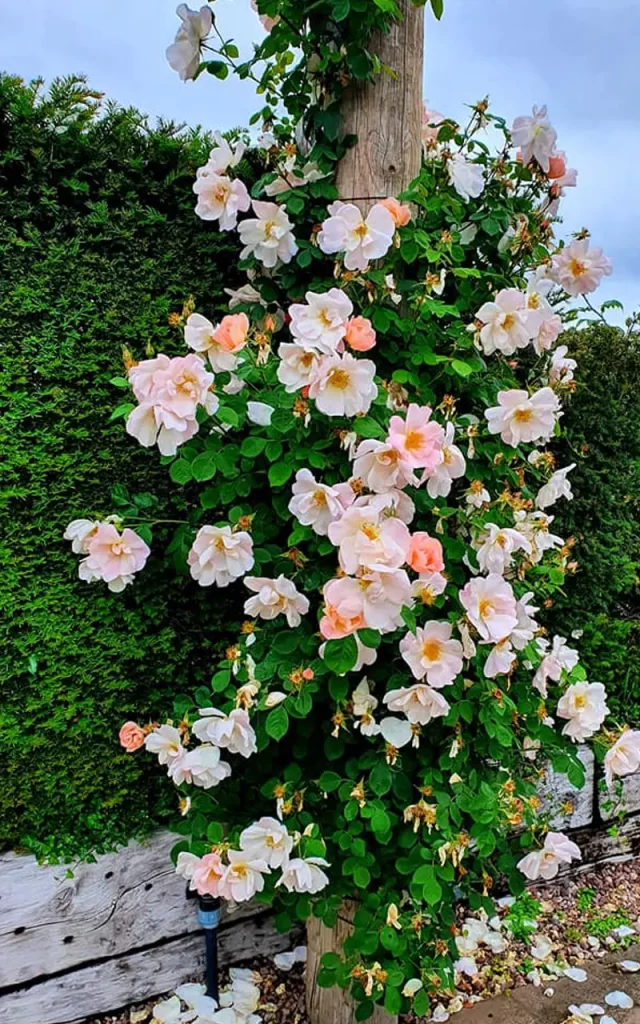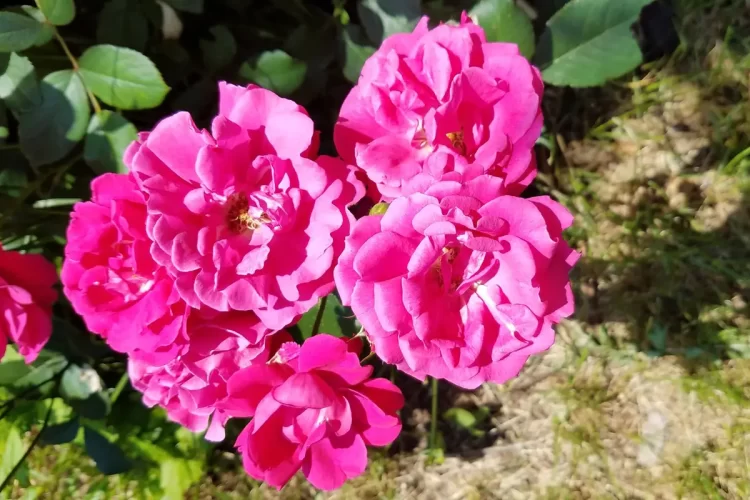Growing roses doesn’t have to be daunting. Many beginner-friendly rose varieties thrive with minimal care, producing beautiful blooms year after year. With the right rose type, a few foundational care tips, and a bit of patience, even those new to gardening can achieve a vibrant rose garden. Here’s a comprehensive guide to choosing and maintaining the best easy-to-grow rose bushes that will add color, fragrance, and charm to any garden.
Choosing the Best Easy-to-Grow Rose Varieties
Certain rose varieties are more resilient, requiring less pruning, fertilizing, and pest control, making them perfect for beginners. Here are some of the most reliable, easy-to-grow rose types:
1. Knock Out Roses
Knock Out® roses are incredibly popular for their low maintenance and abundant blooms. They are disease-resistant, hardy, and self-cleaning, meaning the flowers drop naturally, so they require little deadheading.
- Color Range: Red, pink, yellow, white
- Bloom Time: Late spring through fall
- Hardiness Zones: 5-11
- Ideal Conditions: Full sun; tolerate heat well but appreciate some afternoon shade in hot climates
2. Drift Roses
Drift® roses are ground-cover roses known for their compact size, making them ideal for small gardens, borders, or containers. They offer prolific blooms throughout the growing season and are extremely resistant to diseases.
- Color Range: Coral, pink, white, red, peach
- Bloom Time: Spring to frost
- Hardiness Zones: 4-11
- Ideal Conditions: Full sun; well-draining soil is essential to prevent root rot
3. Flower Carpet Roses
This ground-cover rose variety requires very little maintenance, is disease-resistant, and tolerates drought well once established. Flower Carpet® roses are known for their ability to continuously bloom and spread beautifully.
- Color Range: White, pink, red, yellow, coral
- Bloom Time: Spring through fall
- Hardiness Zones: 5-10
- Ideal Conditions: Full sun; partial shade in extreme heat
4. Zephirine Drouhin (Thornless)
For those who prefer thornless varieties, Zephirine Drouhin offers beauty and ease. This climbing rose is known for its fragrant blooms and is one of the few roses that tolerate partial shade.
- Color Range: Deep pink
- Bloom Time: Late spring, with periodic reblooming
- Hardiness Zones: 5-9
- Ideal Conditions: Full sun to partial shade; well-draining soil
Essential Tips for Growing Rose Bushes Successfully

Growing roses requires understanding their basic needs, such as optimal sunlight, soil conditions, and pest control. Here are tips that apply to most easy-care rose bushes.
1. Planting Location and Soil Preparation
Selecting the right spot is crucial for healthy roses. Most roses prefer 6-8 hours of direct sunlight daily. Prepare the soil by enriching it with organic matter like compost or well-rotted manure, which will improve drainage and provide essential nutrients.
- Soil Type: Roses prefer slightly acidic soil with a pH between 6.0 6.5. Add lime to raise the pH if the soil is too acidic, or sulfur to lower it if too alkaline.
- Drainage: Good drainage is essential to prevent root rot. If your soil tends to retain water, consider planting roses in raised beds.
2. Watering Techniques
Roses thrive with regular watering, especially in their first growing season. Deep, infrequent watering encourages strong root development.
- Frequency: Water twice a week during dry spells.
- Method: Water at the base of the plant to keep the foliage dry, which reduces the risk of fungal diseases. Avoid overhead watering, as wet leaves can promote black spot and mildew.
3. Mulching for Moisture and Weed Control
Applying a 2-3 inch layer of mulch around rose bushes helps conserve soil moisture, suppresses weeds, and provides nutrients as it decomposes.
- Best Mulch Types: Organic mulches like bark chips, compost, or straw are ideal. Keep the mulch a few inches away from the stem to prevent rot.
- Frequency: Reapply mulch annually, ideally in spring, to refresh its benefits.
4. Fertilizing for Optimal Growth
Roses benefit from a balanced fertilizer applied several times throughout the growing season. A fertilizer high in nitrogen, phosphorus, and potassium promotes healthy growth and abundant blooms.
- Frequency: Fertilize in early spring, mid-summer, and fall.
- Type: Use a slow-release, balanced rose fertilizer or organic options like compost tea or fish emulsion.
- Application: Avoid fertilizing late in the season, as this can encourage new growth vulnerable to frost.
5. Pruning for Shape and Health
Regular pruning helps roses stay healthy and encourages vigorous blooming. Focus on removing dead or diseased wood and shaping the bush for optimal airflow.
- When to Prune: Early spring is the best time for most rose types, just as new growth begins.
- How to Prune: Remove any dead, damaged, or diseased canes first. Shape the bush by cutting back any long or spindly branches to promote a bushier appearance.
- Maintenance Pruning: Throughout the growing season, remove faded blooms to encourage repeat flowering.
Protecting Roses from Common Pests and Diseases
Despite being easy to grow, roses can still encounter issues with pests and diseases. Here are some preventive measures and solutions to common problems:
1. Black Spot
This fungal disease appears as dark spots on leaves, leading to yellowing and leaf drop.
- Prevention: To prevent issues, avoid overhead watering and ensure good air circulation.
- Treatment: Remove and discard infected leaves. Apply a fungicide if the problem persists.
2. Powdery Mildew
Powdery mildew creates a white, powdery coating on leaves, common in humid climates.
- Prevention: Ensure proper spacing and good air circulation.
- Treatment: Use a sulfur-based fungicide or a mixture of baking soda and water as a natural remedy.
3. Aphids and Spider Mites
These small insects can damage rose foliage and blooms, especially in warm weather.
- Control: Spray the affected areas with a strong stream of water, or use insecticidal soap. Ladybugs are natural predators of aphids and can be introduced as an organic solution.
Seasonal Care and Winter Protection
While some roses are hardy, protecting them during winter ensures healthy growth in spring. Here’s how to help roses weather the cold:
- Mulch Layering: Apply an additional layer of mulch around the base to insulate roots.
- Prune Late Blooms: Trim any remaining flowers and cover bushes with burlap in colder zones to shield them from freezing winds.
- Container Roses: Move containers to a sheltered area or bury the pot in the ground for insulation.
Tips for Long-Lasting Blooms and Healthy Growth
To maximize blooms, be consistent with watering, feeding, and deadheading (removing spent flowers). In addition, inspect your roses regularly for signs of pests or disease, taking action immediately to keep your plants healthy.
By choosing resilient, easy-care rose varieties and following these maintenance tips, you can enjoy a thriving rose garden with beautiful, fragrant blooms without extensive effort. With a bit of attention and the right approach, even beginners can grow roses that rival those of seasoned gardeners.


